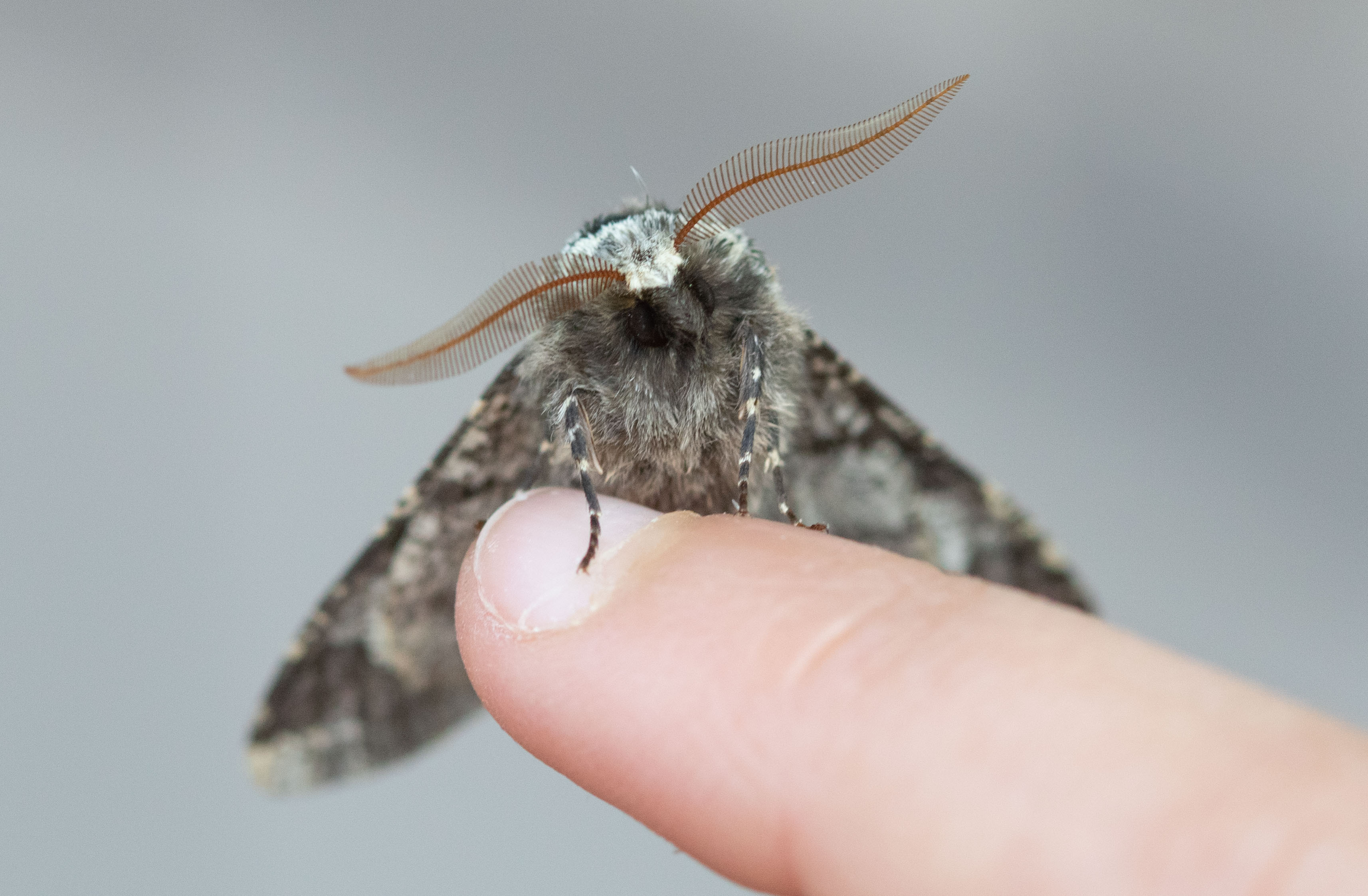I am participating in the Garden Moth Scheme this year, so put out the moth trap in our garden every Friday evening and record our catch. This Friday saw a large increase in the number of moths and our first Oak Beauty: 

The antennae on this moth are fabulous, especially the white dots running along the shaft of the upper surface of the antennae: 
This got me wondering. Why do some moths have complex antennae, but most do not? Most moths have simple antennae. I was immediately encouraged to look into this. Partly because I have enjoyed photographing the amazing variations of antennae in our moth trap, but also because I have discovered that time stops when you start looking closely at moths.
A number of different antennae shapes have been recorded in moths (image © here): 
The majority of moths have simple antennae, like the Buff-tip, Poplar Hawk Moth and Brimstone Moths, below: 


Others have fantastic pectinate or bi-pectinate antennae arrangements, resulting in some truly fabulous headgear. Below, Dark Arches, male Muslin Moth and Pale Prominent: 


Antennae have that evolved over time to perform a wide range of complex functions. These not only include detecting members of the opposite sex through picking up traces of their pheromones, but antennae also have a role to play in providing flight stability. However, in evolutionary terms, antennae began their life as something much more simple: once they were legs.

The trochanter on the image above of an insect leg (© here), is at the junction between the body and the leg. In antennae this area has specialised to contain two wonderfully named organs: the Johnston’s Organ and the Böhm’s Bristles:

Johnston’s Organ (in the pedicle or second section of the antennae) detects motion in flagellum (the third and final section of the antennae) and helps provide flight stability. It is tuned to detect angular changes during maneuvering in complex flight, as demonstrated in Hawkmoths here.
Böhm’s Bristles appear to help control position of the antennae during flight. They are found at the base of the antenna and are tiny, but are visible in these images, labelled “BB” (© here):
The discovery that antennae help provide flight stability in moths is relatively new. Moth antennae are best known as organs of smell. They are highly specialised olfactory organs and can be incredibly sensitive. Amazingly, Indian Lunar Moths have been shown to be able detect a single sex pheromone molecule at a distance of 11km (6.5 miles), see here.
But if that is the case, then why do the majority of moths have simple filamentous antennae and only a minority a more complex array of antennae, like this Brindled Beauty, below?
Surely it would be an advantage to have the largest, most sensitive antennae possible? It appears that this would be the case, but there is a price to pay for having a huge array of pheromone detectors on your head. That price is flight efficiency. Complex bi-pectinate antennae are found on larger moths. Smaller, lighter moths cannot carry around complex antennae without compromising their flight efficiency. Larger moths are less abundant than smaller moths. This is why most moth species have simple filamentous antennae.
Digging deeper, it appears that even simple filamentous antennae have adapted to improve the efficiency of sex hormone detection. Simple filamentous antennae are covered in scales, which have a function in the detection of pheromones:

This paper found that the presence of these scales increased the amount of nanoparticles (like pheromones) around the antenna, and even filtered out microparticles (like dust), which further increased the efficiency of the antenna. In this way the simple filamentous antennae of smaller moths have become increasingly sensitive at detecting pheromones, without compromising flight efficiency.
The greater the detail you discover about the natural world, the greater the wonder it generates. The fact that complex pectinate arrays can make antennae look like giant ears is pretty cool too: Pale Tussock
Pale Tussock
